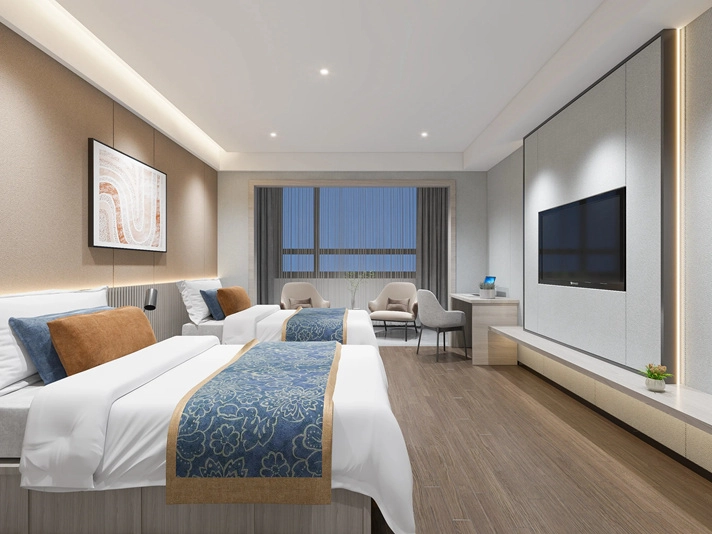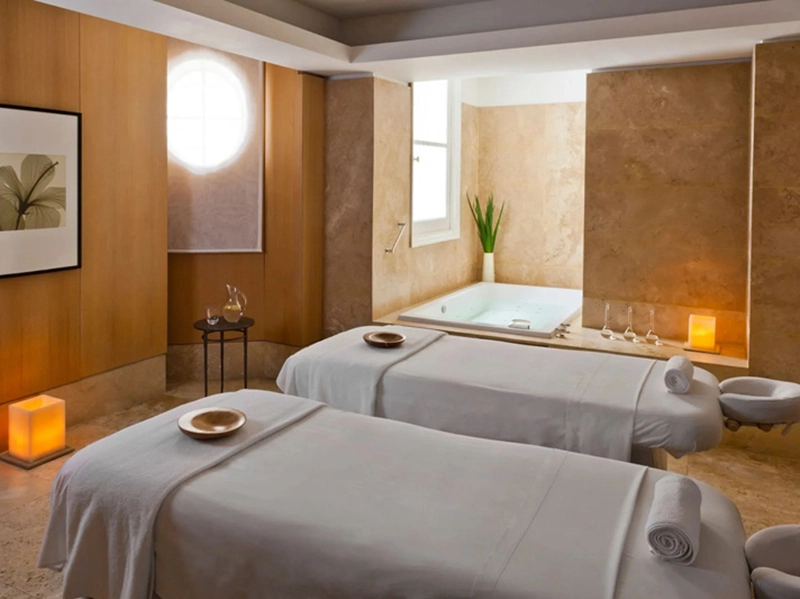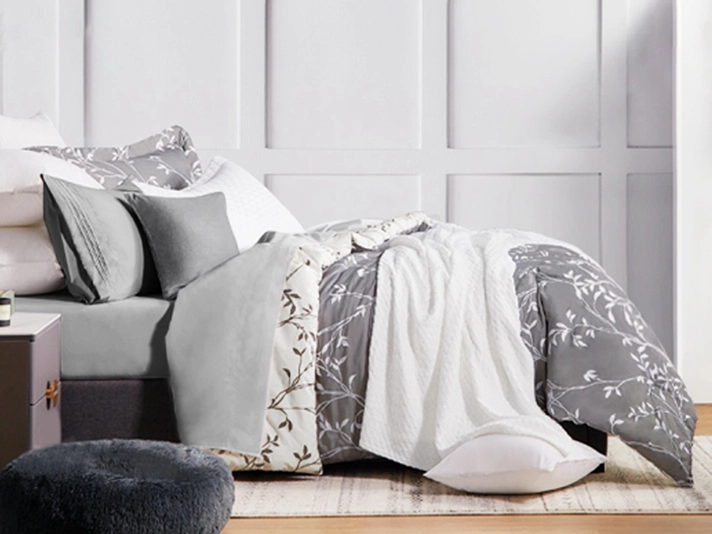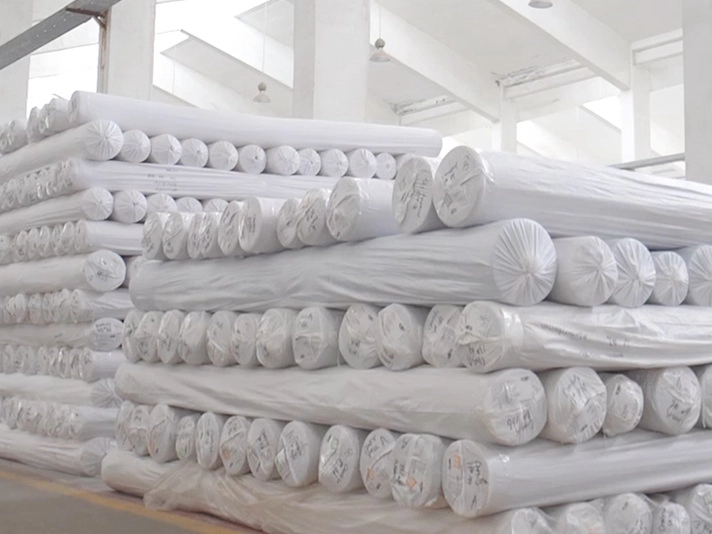Explore Towel Fabric Types: Choose Your Perfect Towel
Understanding the diverse world of towel fabric types is crucial for consumers and businesses alike, especially within the hospitality, healthcare, and home textile sectors. The right fabric choice dictates absorbency, durability, drying time, and overall tactile experience. This comprehensive guide delves into the various towel type fabric, exploring industry trends, technical specifications, application scenarios, and the unique advantages offered by different towel varieties, including insights into materials like those used in the luxurious Hotel Linen Velvet Cutting Style Cloth Bathrobe.
Industry Trends in Towel Fabric Innovation
The global towel market is experiencing significant evolution, driven by consumer demand for sustainable products, advanced performance features, and luxurious experiences. Key trends shaping the landscape of towel fabric types include:
- Sustainability and Eco-Friendly Materials: A growing emphasis on organic cotton, bamboo, recycled polyester, and linen due to environmental concerns and consumer preferences for responsible sourcing. According to a recent report by Grand View Research, the global organic cotton market size was valued at USD 1.5 billion in 2022 and is expected to grow, reflecting a broader shift towards sustainable textiles.
- Performance Enhancements: Development of quick-drying, antimicrobial, and ultra-absorbent fabrics through innovative weaves and finishes. This is particularly vital in commercial settings like hotels and gyms, where efficiency and hygiene are paramount.
- Luxury and Comfort: The rise of premium towel varieties featuring high GSM (Grams per Square Meter), extra-long staple cotton (e.g., Egyptian, Pima), and specialized finishes like the velvet cutting style for superior softness and plushness. The Hotel and Leisure market segment continues to drive demand for such premium products.
- Smart Textiles Integration: While nascent, research into smart towels that monitor usage or indicate moisture levels points towards future innovations.
- Customization and Personalization: Businesses are increasingly seeking customized towel solutions, including specific colors, sizes, embroidered logos, and unique textures to align with their brand identity.
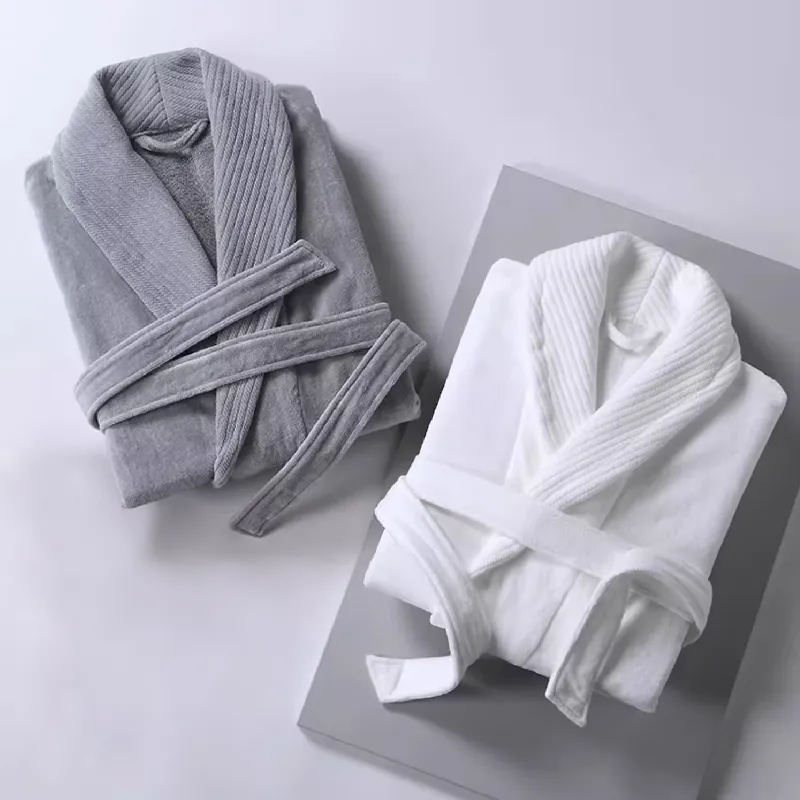
Technical Parameters of Common Towel Varieties
Understanding the technical specifications is essential when selecting the appropriate towel type fabric. Here’s a breakdown of critical parameters:
- GSM (Grams per Square Meter): This indicates the density and weight of the towel fabric. Higher GSM generally means a heavier, denser, and more absorbent towel. For instance, bath towels typically range from 400-900 GSM. A luxurious bathrobe like the Hotel Linen Velvet Cutting Style Cloth Bathrobe often features a high GSM to ensure maximum plushness and absorbency.
- Fiber Composition: The type of fiber significantly impacts performance. Common fibers include:
- Cotton: Known for its absorbency and softness. Variants like Egyptian, Pima, and Supima cotton offer superior staple length, leading to stronger, softer, and more durable yarns. Upland cotton is more common and affordable.
- Microfiber: A blend of polyester and polyamide, highly absorbent, quick-drying, and durable. Excellent for cleaning due to its ability to trap dust and dirt.
- Bamboo: Naturally antibacterial, hypoallergenic, and highly absorbent, offering a silky soft feel. It's also a sustainable choice.
- Linen: Very durable, absorbent, and quick-drying, though often less soft than cotton for bath towels.
- Blends: Combinations like cotton-polyester or bamboo-cotton offer a balance of properties.
- Yarn Type and Twist:
- Combed Cotton: Yarns are combed to remove short fibers, resulting in a smoother, stronger, and more lustrous fabric.
- Ring-spun Cotton: Yarns are made by continuously twisting and thinning cotton strands, creating a finer, softer, and more durable yarn.
- Open-end Cotton: Less expensive, but results in a coarser, less absorbent towel.
- Zero Twist: Yarns are made without twisting, allowing the cotton fibers to open up, increasing absorbency and softness significantly, though sometimes at the expense of durability.
- Weave Type:
- Terry Loop: The most common weave for towels, characterized by uncut loops that maximize surface area for absorbency. The Hotel Linen Velvet Cutting Style Cloth Bathrobe starts as a terry fabric before its special finishing.
- Velour (Sheared Terry): Achieved by shearing the loops of a terry fabric on one side, creating a smooth, plush, velvet-like surface. This process enhances softness and gives a luxurious feel, making it ideal for bathrobes and decorative towels, as seen in our Hotel Linen Velvet Cutting Style Cloth Bathrobe.
- Waffle Weave: Creates a honeycomb-like pattern, making the towel lightweight, highly absorbent, and quick-drying.
- Dyeing and Finishing: Fastness to washing, chlorine resistance, and special finishes (e.g., antimicrobial treatments, softening agents).
Towel Fabric Types - Performance Comparison
Below is a comparison table illustrating key performance metrics across common towel varieties, based on average industry data. This data helps in making informed decisions about the best types of bath towel for specific needs.
| Fabric Type | Absorbency (Scale 1-5, 5=Highest) | Drying Time (Scale 1-5, 5=Fastest) | Softness (Scale 1-5, 5=Softest) | Durability (Scale 1-5, 5=Highest) | Typical GSM Range | Best Use Case |
|---|---|---|---|---|---|---|
| Standard Cotton Terry | 4 | 3 | 3 | 4 | 400-600 | Everyday home, budget hospitality |
| Egyptian/Pima Cotton | 5 | 3 | 5 | 5 | 600-900+ | Luxury hotels, high-end home |
| Bamboo Fabric | 5 | 4 | 5 | 3 | 500-700 | Eco-conscious, sensitive skin, spas |
| Microfiber | 4 | 5 | 4 | 4 | 200-400 (for towels) | Gym, travel, cleaning, quick dry needs |
| Velour (Sheared Terry) | 3 | 2 | 5 | 4 | 400-800 | Bathrobes, luxury items, decorative towels |
| Waffle Weave | 4 | 5 | 3 | 3 | 250-450 | Spa, lightweight home, beach |
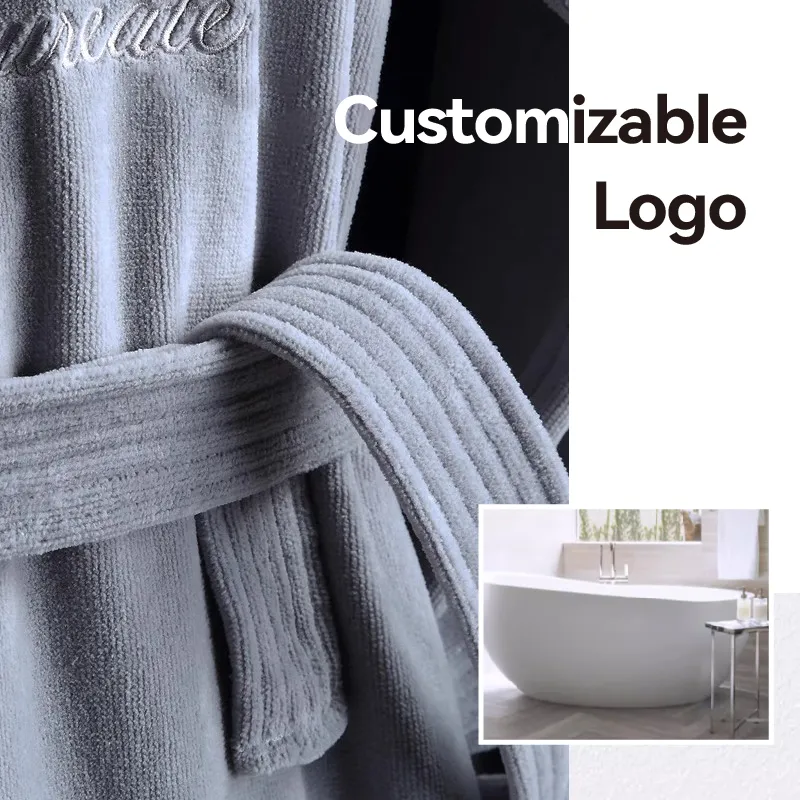
Application Scenarios and Advantages
The choice of towel fabric types is highly dependent on the intended application, each offering specific advantages:
- Hospitality (Hotels, Resorts, Spas): High-end establishments often prefer luxurious types of bath towel like Egyptian or Pima cotton for their superior softness and absorbency, along with robust durability to withstand frequent commercial laundering. The Hotel Linen Velvet Cutting Style Cloth Bathrobe is a prime example, providing guests with unparalleled comfort and a sense of luxury, enhancing their stay experience. Its velour finish ensures a soft touch against the skin and a sophisticated appearance, reflecting the hotel's commitment to quality.
- Healthcare (Hospitals, Clinics): Focus on hygiene, durability, and ease of sterilization. Microfiber or durable cotton blends that can withstand high-temperature washing and bleach are preferred. Antimicrobial treatments are also increasingly important.
- Home Use: A balance of comfort, absorbency, and cost-effectiveness. Consumers often choose based on personal preference for softness (e.g., zero-twist cotton) or quick-drying properties (e.g., bamboo, waffle weave).
- Gyms and Sports Facilities: Quick-drying and lightweight materials like microfiber are favored for their portability and efficiency.
- Cleaning and Industrial Use: Microfiber's lint-free nature and excellent particle trapping capabilities make it ideal for cleaning various surfaces without scratching.

Technical Advantages of Premium Towel Fabrics
Beyond basic functionality, premium towel fabric types offer distinct technical advantages:
- Superior Absorbency: Achieved through longer cotton staples (like in Egyptian or Pima cotton), zero-twist construction, or the unique capillary action of microfiber. This means less effort to dry and a more effective post-bath experience.
- Enhanced Softness and Comfort: The Hotel Linen Velvet Cutting Style Cloth Bathrobe exemplifies this. Its velvet cutting style creates a sheared, plush surface that feels incredibly soft against the skin, superior to traditional looped terry. This is often achieved through mercerization (a chemical process that strengthens cotton fibers and enhances luster and dye uptake) and specialized softening finishes.
- Exceptional Durability and Longevity: High-quality fibers and robust weaving techniques (like double-ply yarns) ensure towels withstand hundreds of wash cycles without losing integrity, pile density, or color vibrancy. This translates to a lower replacement cost for commercial users.
- Quick-Drying Properties: Essential for high-turnover environments or for personal convenience. Fabrics like microfiber and waffle weave excel here due to their construction and fiber properties that allow moisture to evaporate rapidly.
- Colorfastness: Using reactive dyes and proper dyeing techniques ensures colors remain vibrant even after extensive washing, a critical factor for maintaining brand aesthetics in hospitality.
Manufacturing Process of Towel Fabric: Focusing on Velvet Cutting Style
The creation of high-quality towel type fabric, especially specialty finishes like the velvet cutting style, involves a meticulous multi-stage process. Here’s a detailed breakdown:
1. Fiber Sourcing & Preparation:
Raw fibers, predominantly high-grade cotton (e.g., long-staple cotton for durability and softness), are carefully selected. They undergo ginning to remove seeds and then are cleaned to eliminate impurities.
2. Yarn Spinning:
Cleaned fibers are carded and combed (for finer yarns) to align them, then spun into various counts of yarn. For premium towels and bathrobes, ring-spun or zero-twist yarns are often preferred for their strength and softness.
Fiber -> Carding/Combing -> Spinning -> Yarn
3. Weaving (Terry Loop Formation):
The spun yarns are loaded onto looms. For towels and bathrobes, a specialized weaving process creates terry fabric. This involves two sets of warp yarns (ground warp for the base fabric and pile warp for the loops) and one weft yarn. The pile warp is slackened to create the characteristic loops on the fabric surface, maximizing absorbency.
Yarn -> Weaving Machine -> Greige (Unfinished) Terry Fabric
4. Pre-treatment:
The "greige" (raw, uncolored) terry fabric undergoes several treatments:
- Scouring: Removes natural impurities, oils, and sizing agents applied during weaving.
- Bleaching: Whitens the fabric, preparing it for dyeing and ensuring consistent color results. Hydrogen peroxide is commonly used for eco-friendly bleaching.
- Mercerization (Optional but Recommended for Premium Fabrics): A process where cotton fabric is treated with a caustic solution under tension. This increases fiber strength, luster, dye uptake, and dimensional stability.
Greige Fabric -> Scouring -> Bleaching -> (Mercerization) -> Prepared Fabric
5. Dyeing:
The prepared fabric is dyed to the desired color using advanced dyeing machines. Reactive dyes are commonly used for cotton to ensure excellent colorfastness, meaning the color will not fade easily after repeated washing.
Prepared Fabric -> Dyeing -> Dyed Fabric
6. Finishing (The "Velvet Cutting Style" Highlight):
This is where the Hotel Linen Velvet Cutting Style Cloth Bathrobe gets its distinctive texture.
- Shearing/Velvet Cutting: The dyed terry fabric is passed through a shearing machine. Precision blades cut the top of the terry loops on one side of the fabric. This transforms the looped surface into a dense, smooth, and plush pile, creating the luxurious velour or "velvet" effect. This process is critical for the tactile softness and elegant appearance of the bathrobe.
- Napping/Brushing (Optional): Further brushing can be applied to enhance softness and create a slight nap.
- Softening: Chemical softeners are applied to further enhance the hand-feel and drape of the fabric.
- Drying: The fabric is then dried using large industrial dryers.
- Sanforization (Optional): A mechanical process to pre-shrink the fabric, minimizing future shrinkage after washing.
Dyed Fabric -> Shearing (Velvet Cutting) -> Softening -> Drying -> Finished Fabric
7. Quality Control & Inspection:
Throughout the process, and especially after finishing, the fabric undergoes rigorous quality control. This includes checks for GSM, color consistency, pile height, defects, and adherence to international standards like ISO (e.g., ISO 9001 for quality management) and textile-specific standards (e.g., OEKO-TEX Standard 100 for harmful substances, ASTM standards for textile testing).
The lifespan of such a product, when manufactured to high standards, can exceed 150-200 wash cycles in commercial settings, significantly outperforming lower-quality alternatives.
8. Cutting & Sewing:
The finished fabric is precisely cut into patterns for bathrobes (or towels) and then expertly sewn together by skilled tailors. This stage ensures accurate sizing and strong seams, essential for commercial durability.
9. Packaging:
The final products are inspected one last time, folded, and packaged for shipment.
Finished Fabric -> Quality Control -> Cutting & Sewing -> Packaging -> Final Product
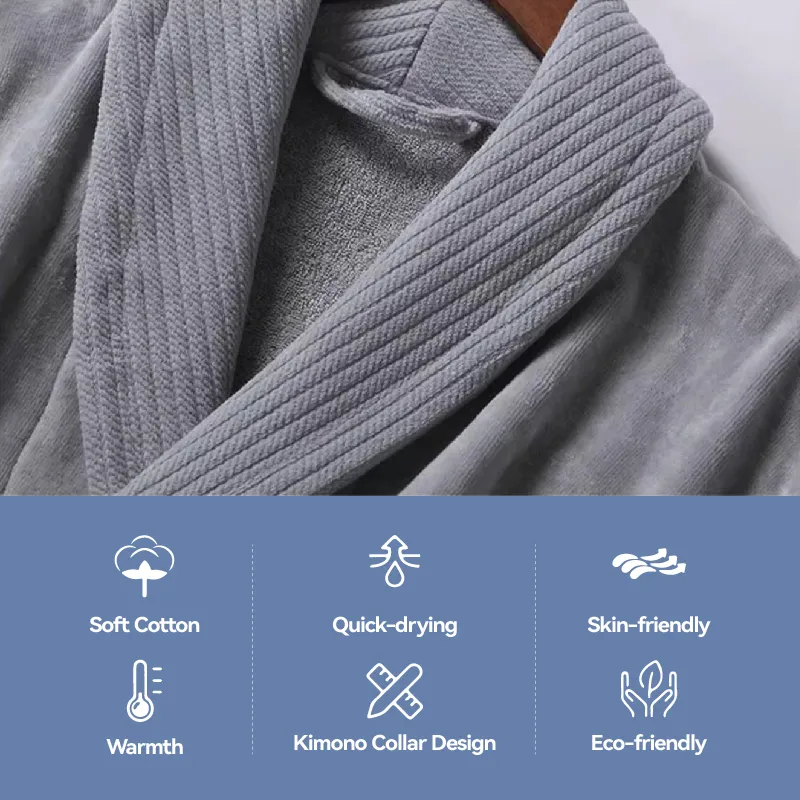
Manufacturer Comparison and Selection Factors
When selecting a manufacturer for towel fabric types, particularly for bulk or customized orders like the Hotel Linen Velvet Cutting Style Cloth Bathrobe, several factors differentiate top-tier suppliers:
- Quality Control and Certifications: Reputable manufacturers adhere to strict quality management systems (e.g., ISO 9001:2015). For textile products, certifications like OEKO-TEX Standard 100 (ensuring no harmful substances), GOTS (Global Organic Textile Standard) for organic cotton, and SA8000 (Social Accountability Standard) are indicators of ethical and high-quality production. Longshow Textile, for instance, prides itself on meeting rigorous international standards to deliver consistent quality.
- R&D and Innovation: Leading manufacturers invest in research and development to create new fiber blends, weaving techniques, and finishing processes (like the advanced velvet cutting style), offering unique product differentiation.
- Customization Capabilities: The ability to provide bespoke solutions in terms of GSM, size, color matching (using pantone codes), weaving patterns, and branding (embroidery, labels) is crucial for businesses with specific needs.
- Supply Chain Efficiency and Transparency: A robust supply chain ensures timely delivery and traceability of materials. For instance, Longshow Textile has established a reliable supply network over its 20+ years in the industry, ensuring consistent material quality and timely production.
- Customer Support and After-Sales Service: Responsive communication, technical support, and clear warranty policies build long-term partnerships.
- Capacity and Lead Times: Ensuring the manufacturer can meet your volume requirements and deliver within specified timelines is vital for business operations.
Custom Solutions for Towel Fabric Needs
Customization is a significant aspect of the commercial textile industry, allowing businesses to tailor types of bath towel and bathrobes to their exact specifications. Longshow Textile offers comprehensive custom solutions for the Hotel Linen Velvet Cutting Style Cloth Bathrobe and other towel varieties:
- Material Blends: Customizing the fiber composition (e.g., cotton-bamboo, cotton-modal) to achieve specific desired properties like enhanced softness, quick-drying, or durability.
- GSM and Size Variation: Producing towels or bathrobes in specific weights and dimensions not commonly available, perfectly suited for unique operational requirements or luxury appeal.
- Color Matching: Precision dyeing to match specific brand colors or interior design schemes, utilizing Pantone Textile System references for accuracy.
- Embroidery and Logo Integration: Incorporating custom logos, monograms, or designs through high-quality embroidery, enhancing brand visibility and product exclusivity. For our Hotel Linen Velvet Cutting Style Cloth Bathrobe, custom embroidery elevates the guest experience and reinforces brand identity.
- Special Finishes: Applying treatments such as antimicrobial finishes (for healthcare or gyms), stain-resistant coatings, or extra softening agents.
- Packaging: Custom packaging options, including individual polybags, branded boxes, or eco-friendly alternatives, for retail or specific distribution needs.
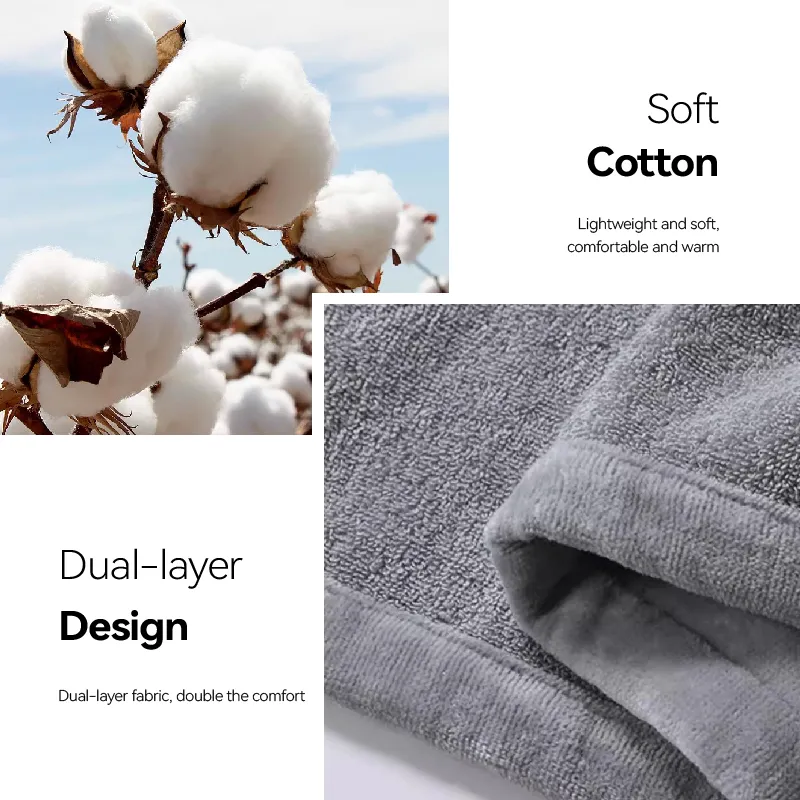
Application Cases: The Hotel Linen Velvet Cutting Style Cloth Bathrobe in Practice
The Hotel Linen Velvet Cutting Style Cloth Bathrobe exemplifies the perfect marriage of luxury and functionality, making it an ideal choice for discerning establishments. Here are typical application scenarios and demonstrated advantages:
- Luxury Hotels and Resorts: A 5-star resort chain, aiming to elevate its guest experience, adopted the Hotel Linen Velvet Cutting Style Cloth Bathrobe for all its suites. The ultra-soft velour finish and high GSM (e.g., 650 GSM) provided unparalleled comfort, contributing to a significant increase in positive guest reviews related to in-room amenities. The durability of the fabric, confirmed by ASTM D737 (air permeability) and AATCC 135 (dimensional changes) tests, ensured it withstood rigorous commercial laundering, extending its lifespan and reducing replacement costs. This specific product provides a touch of opulence, akin to a high-end spa experience within the guest room.
- High-End Spas and Wellness Centers: A prestigious urban spa integrated these bathrobes into their post-treatment relaxation areas. The plush feel and elegant appearance reinforced the spa's brand image of luxury and tranquility. Its excellent absorbency, despite the sheared surface, meant guests felt comfortably dry, while the softness enhanced the relaxation experience. The robust construction and colorfastness minimized wear and tear even with daily use and industrial washing.
- Boutique Guesthouses: Smaller, design-focused guesthouses utilized the custom color and embroidery options to feature their unique branding. The distinctive "velvet cutting style" added a sophisticated, bespoke touch that set them apart from competitors, leading to increased word-of-mouth referrals and repeat bookings. The product's inherent quality ensured guest satisfaction and provided a memorable, comfortable stay.
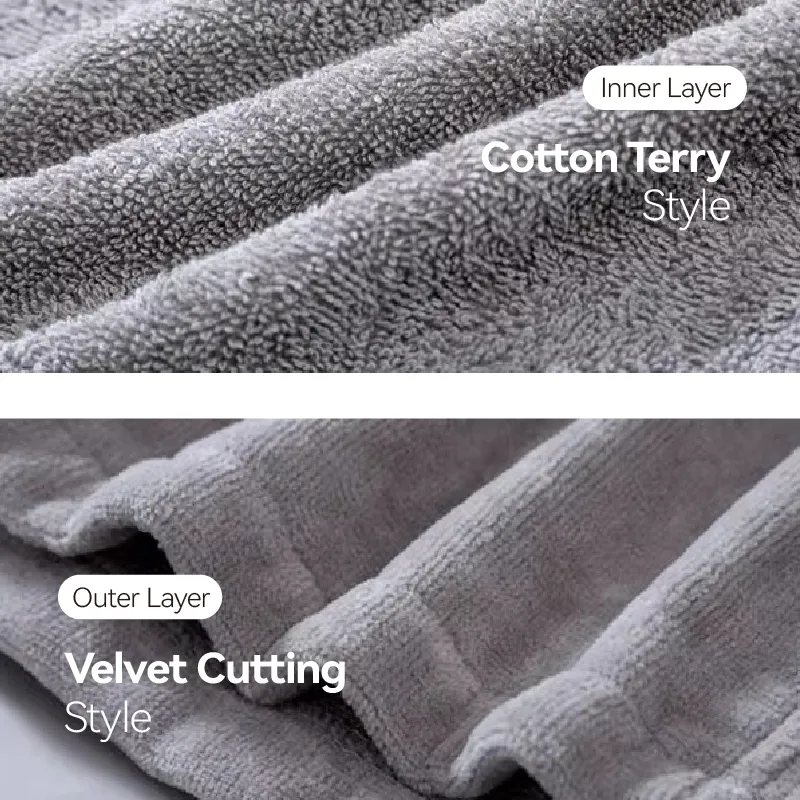
Frequently Asked Questions (FAQ) about Towel Fabric Types
Understanding the nuances of towel type fabric often leads to specific questions. Here are answers to some common inquiries:
Q1: What does GSM mean for towels and bathrobes?
A1: GSM stands for Grams per Square Meter. It's a key indicator of fabric density and weight. Higher GSM (e.g., 600-900 GSM) typically means a thicker, heavier, more absorbent, and often softer towel or bathrobe. Lower GSM (e.g., 300-400 GSM) usually signifies a lighter, quicker-drying, and less dense fabric.
Q2: What is the "velvet cutting style" in a bathrobe, and why is it preferred?
A2: The "velvet cutting style" refers to a finishing process where the loops of a terry fabric are precisely cut on one side. This transforms the looped surface into a smooth, plush, and dense pile, creating a velour-like or "velvet" texture. It is preferred for bathrobes like the Hotel Linen Velvet Cutting Style Cloth Bathrobe because it provides exceptional softness, a luxurious hand-feel, and an elegant appearance, enhancing comfort and aesthetic appeal for guests.
Q3: How do I choose between different types of bath towel material like cotton, bamboo, and microfiber?
A3: The choice depends on your priorities:
- Cotton (especially Egyptian/Pima): Best for ultimate softness, absorbency, and durability. Ideal for luxury use.
- Bamboo: Excellent for absorbency, natural antibacterial properties, and sustainability. Very soft and gentle on skin.
- Microfiber: Superior for quick-drying, lightweight needs, and effective cleaning. Not typically used for bath towels but excellent for gym or travel.
Q4: What certifications should I look for when purchasing bulk towel varieties?
A4: Look for certifications like OEKO-TEX Standard 100 (guarantees textiles are free from harmful substances), GOTS (Global Organic Textile Standard for organic products), and ISO 9001 (quality management system). These indicate a commitment to quality, safety, and responsible manufacturing practices.
Q5: What is the typical lifespan of a high-quality hotel bathrobe like the Hotel Linen Velvet Cutting Style Cloth Bathrobe?
A5: A high-quality hotel bathrobe, manufactured from durable materials and with robust stitching, can typically withstand 150-200 commercial wash cycles without significant degradation, provided proper care instructions are followed. This ensures a long service life and good return on investment for hotels and spas.
Q6: Can towel fabric types be customized for specific branding?
A6: Absolutely. Reputable manufacturers like Longshow Textile offer extensive customization options, including specific GSM, custom sizes, precise color matching to Pantone codes, and integrating logos or monograms through high-quality embroidery. This allows businesses to maintain brand consistency and offer a unique product.
Q7: Are there any specific care instructions for velour-finished bathrobes to maintain their softness?
A7: To maintain the softness and integrity of velour-finished bathrobes like the Hotel Linen Velvet Cutting Style Cloth Bathrobe, it's recommended to wash them in warm water with similar colors, avoid harsh detergents or excessive bleach, and tumble dry on low heat. Using fabric softener sparingly can help maintain softness, but too much can reduce absorbency over time. Air drying or partial tumble drying followed by air drying can also preserve the plushness.
Delivery and Warranty Information
Longshow Textile is committed to efficient service and product reliability. Our standard delivery times for custom or bulk orders of towel fabric types, including the Hotel Linen Velvet Cutting Style Cloth Bathrobe, typically range from 30-45 days, depending on order volume and customization requirements. Expedited options may be available upon request. We understand the importance of timely delivery for commercial operations. All our products undergo stringent quality checks before shipment. We offer a comprehensive warranty against manufacturing defects, covering a period of 12 months from the date of purchase. Our dedicated customer support team is available to assist with any queries regarding product specifications, order tracking, or after-sales service, ensuring a seamless experience from inquiry to delivery and beyond. Our commitment to trustworthiness is reflected in our transparent policies and consistent product performance over two decades in the industry.
The journey through the world of towel fabric types reveals a complex interplay of materials, manufacturing techniques, and application-specific demands. From the basic utility of everyday cotton to the luxurious embrace of a velvet-cut bathrobe, each fabric type serves a distinct purpose, offering unique advantages. Understanding these nuances empowers consumers and businesses to make informed choices that align with their needs for absorbency, durability, comfort, and aesthetics. The Hotel Linen Velvet Cutting Style Cloth Bathrobe stands as a testament to how specialized fabric processing can transform a functional item into a statement of luxury and quality, embodying the pinnacle of textile craftsmanship in hospitality.
For further academic insights into textile manufacturing and quality control, interested readers can refer to resources such as:
- "Textile Science and Technology" by various academic publishers, often discussing yarn types, weaving technologies, and finishing processes. (Example: "Advances in Textile Engineering" or "Journal of Textile Institute")
- For industry-specific data and trends in the hospitality linen sector, reports from leading market research firms (e.g., Grand View Research, Mordor Intelligence) or industry forums like the Hotel Business Journal or American Hotel & Lodging Association (AHLA) provide valuable insights into evolving demands and sustainability efforts within the industry.
-
Garment Washed Sheets Color Retention Prevents Fading After WashesNewsNov.14, 2025
-
Charcoal Bamboo Sheets Moisture-Wicking Property Enhances Sleep ComfortNewsNov.12, 2025
-
High Quality Satin Sheets Soft Touch Improves Hotel Guest ExperienceNewsNov.12, 2025
-
Poly Cotton Sheets Breathable Weave Reduces Skin Irritation For PatientsNewsNov.12, 2025
-
Microfiber Sheet Stain Resistant Feature Eases Hotel HousekeepingNewsNov.12, 2025
-
Polyester Cotton Bedding Durable Fabric Withstands Frequent Hotel WashesNewsNov.12, 2025
-
Microfiber Pillow Filling Even Distribution Prevents LumpingNewsNov.03, 2025

